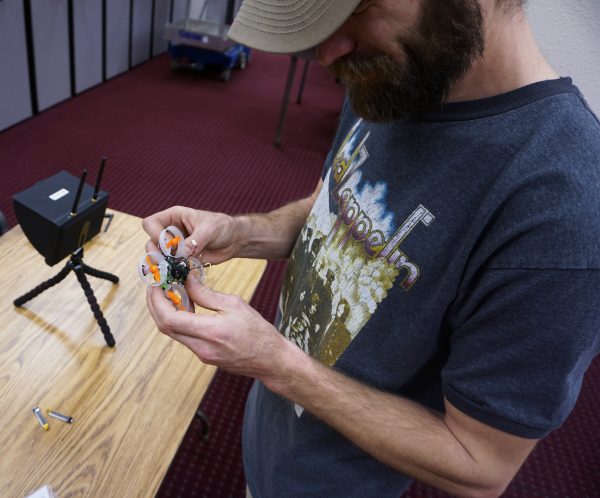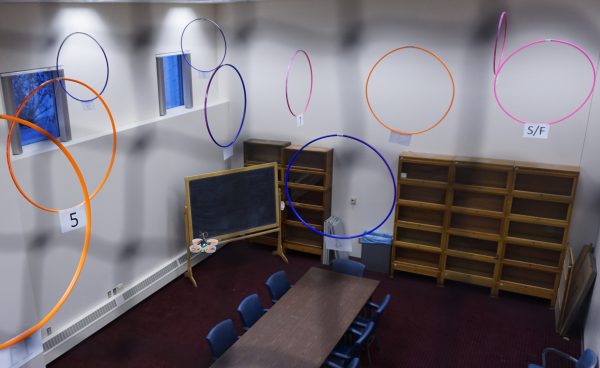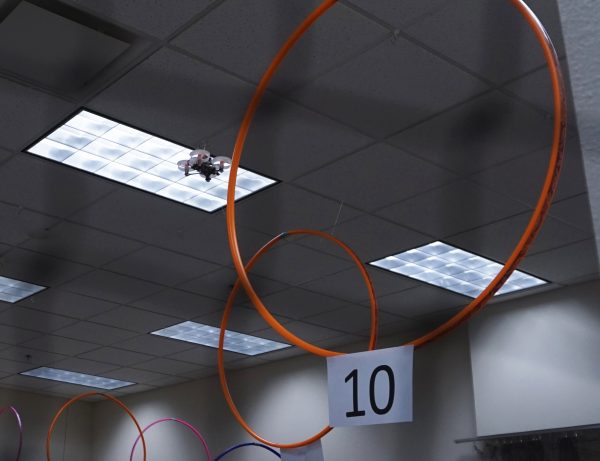UAF to host drone races
November 27, 2017
Sue Mitchell
907-474-5823

The first University of Alaska Fairbanks drone races will be held at the Patty Center ice arena from 11 a.m. to 2 p.m. Sunday, Dec. 3.
The Alaska Center for Unmanned Aircraft Systems Integration, or ACUASI, is holding the event, in association with the Federal Aviation Administration’s Center of Excellence for UAS Research.
ACUASI pilots Nick Adkins and Matthew Westhoff have been working with local drone enthusiasts, and they have created a practice course in the basement of the Mather Library, in the Akasofu Building at UAF. Twelve hula hoops are suspended from the ceiling at different heights, and nets keep the drones from straying out of bounds. Pilots use quadcopters called Tiny Whoops, dodging through the hoops to run the course in the shortest time possible.

“It’s a completely three-dimensional course," Adkins said. "These are fully acrobatic machines. ... You can dive straight through something or go straight up and then turn.”
This form of drone flying uses mounted cameras that allow the pilot to see through the point of view of their drone: first person view or FPV.
“It’s virtual reality in the sense that you’re inside the machine,” Adkins said. “It’s like you’re there moving. In fact, a lot of times if they’re not sitting down with their head down, they can get sick.”
The course, and the race, are part of several projects that ACUASI is working on to teach the public about unmanned aircraft and aviation. The public is encouraged to watch the races and cheer on their favorites. The event will start off with qualifying races, which will determine the participants’ starting positions in the championship race.
These drones are able to travel 40 to 60 mph, making for an exciting race. The drone cameras will be projected in big screens that will show what the racers see as they speed through the course or crash into obstacles.

Since the drones move so quickly, no one would be able to see when the drones complete laps, so a machine detects the radio frequency emitted by the drone as it passes and records the drone’s time.
“Ideally this would lead to, who knows, maybe a Nanook racing team,” Adkins said, referencing UAF’s polar bear mascot. “This really is brand new.”
“This could be an event for moms and dads to go hang out with their kids; anybody can do this,” Adkins said. “Someone who has a disability sitting in a wheelchair can do this. ... When I say anybody, I mean if they can see and move their thumbs around, they can try and fly these things. As far as money going into it, it’s not cheap, but it’s less than hockey gear.”
FOR MORE INFORMATION: Nick Adkins, 907-455-2023, ncadkins@alaska.edu


